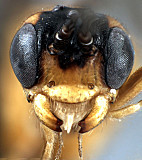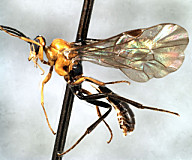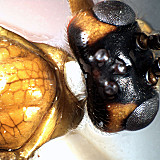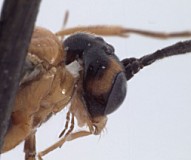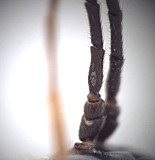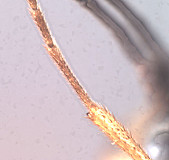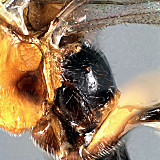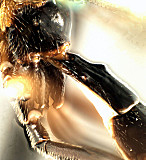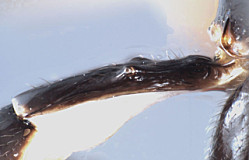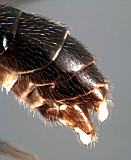As of 2015, Tasmabates was known from a single specimen, the male holotype in the American Entomological Institute.
Tasmabates Gauld, 1984
The phylogenetic placement of Tasmabates remains a mystery, as the preliminary analysis by Zhaurova and Wharton (2009) only suggests its removal from the Scolobatini and the Westwoodiini. In their analyses, however, the branch containing Euryproctini, Westwoodiini and the Scolobatini is weakly supported by only one character: the absence of a ventrolateral carina posterior to the spiracles on tergite 1. This carina is present in Tasmabates and in one other outgroup taxon of a different subfamily (Tryphoninae: Eclytus ornatus). The only known specimen of Tasmabates possesses many autapomorphies as well as a combination of characters that are novel relative to other ctenopelmatine tribes. Further assessment of its placement will only be possible with a much larger sampling of ctenopelmatines.
Label data from holotype of type species (Holotype ♂, AEIC):
top label = printed, black ink on white paper, 3 lines as follows:
Mount Barrow
Tasmania 1200m
January 10-26 [original description incorrectly says 10-25]
2nd label = Type 1714 (hand-written black ink on yellow paper)
There are no specimens currently determined for this OTU, or those specimens determined for this OTU are not yet mappable.
This work would not have been possible without the groundwork provided by Ian Gauld’s study of the Australian fauna, and we are particularly grateful for his assistance in many aspects of this study. We also thank the following curators and researchers for extended loans of the material used for this revision: David Wahl (AEIC), John LaSalle (ANIC), Ian Gauld and Gavin Broad (BMNH), Andy Bennett (CNC), Gabriel Melo (DZUP), Anders Albrecht and Pekka Malinen (FMNH), Ronald Zúñiga (INBio), Ken Walker (MVMA), Hege Vårdal (NHRS), Chris Burwell (QM), and Dave Furth (USNM). Matt Yoder provided considerable assistance along the way, particularly with databasing. Images used here were obtained through the combined efforts of Kira Zhaurova, Heather Cummins, and Patricia Mullins. Our use of PURLs (http://purl.oclc.org) follows the example of their use in publications by Norm Johnson. This material was conducted at Texas A&M University and is based upon work supported by the National Science Foundation’s PEET program under Grant No. DEB 0328922 and associated REU supplement nos DEB 0723663 and DEB 0616851. Page last updated May, 2015.
This material is based upon work supported by the National Science Foundation under Grant Number DEB 0328922 with REU supplement DEB 0723663 and DEB 0616851. Any opinions, findings, and conclusions or recommendations expressed in this material are those of the author(s) and do not necessarily reflect the views of the National Science Foundation.

